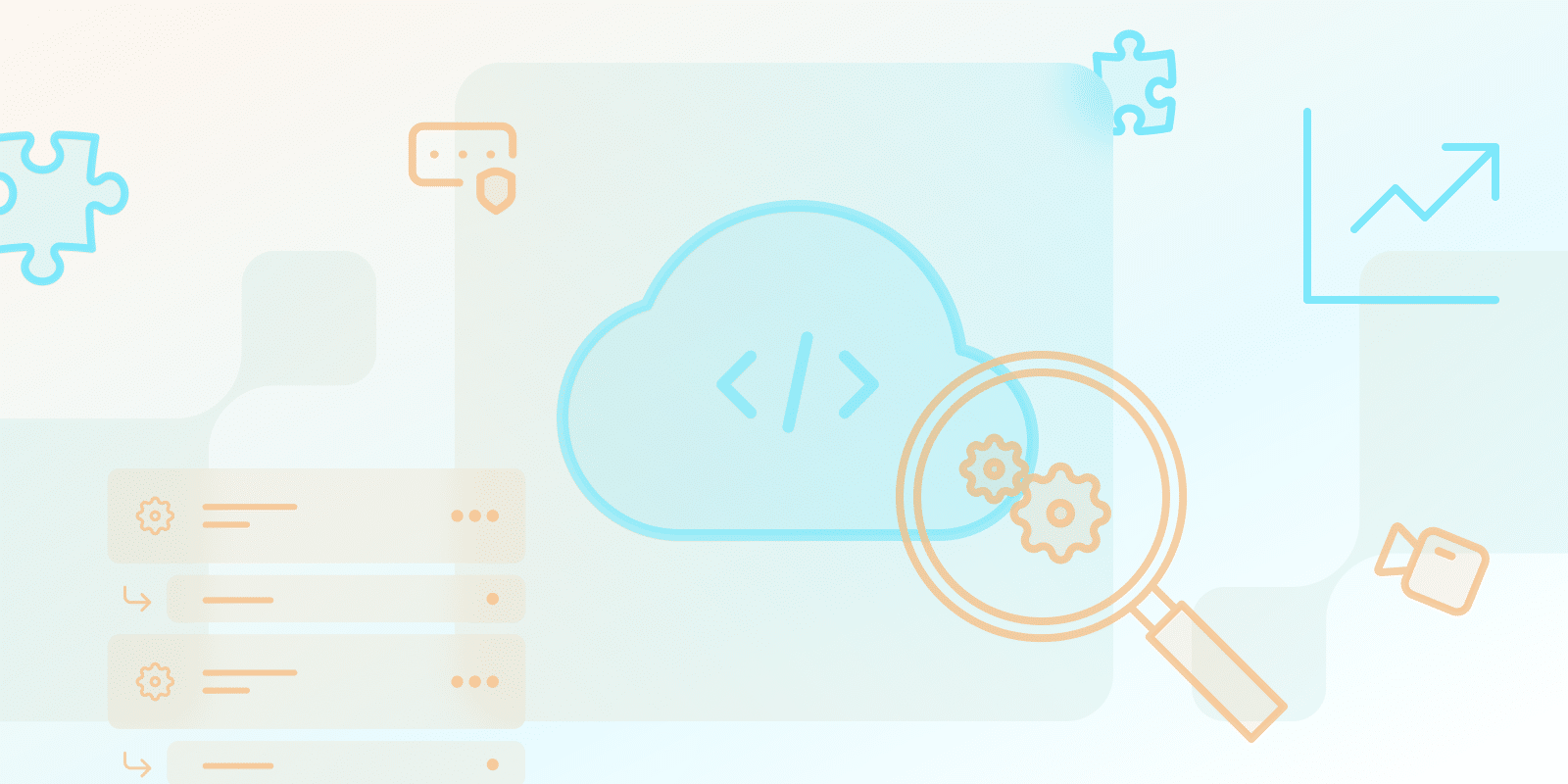Operações habilitadas para nuvem
O que é monitoramento e registro em nuvem SaaS?
Published: outubro 23, 2024
Last updated: novembro 26, 2024

O que é monitoramento e registro em nuvem SaaS?
O monitoramento e login em nuvem SaaS no DevOps é quando você monitora, registra e analisa regularmente o desempenho do seu aplicativo SaaS. Seu objetivo é obter visibilidade sobre a infraestrutura digital da sua organização.
Você deve usar esta técnica para observação e avaliação. Também é usado para gerenciar cargas de trabalho e abranger medições.
Por que o monitoramento em nuvem é crucial para as empresas?
Razões pelas quais você precisa monitorar sua nuvem incluem:
- Entenda a integridade e o desempenho da sua infraestrutura em nuvem
- Utilize recursos
- Economize dinheiro se possível
- Encontre e resolva problemas antes que se tornem problemas significativos
Seu principal objetivo geral é detectar e prevenir riscos de segurança.
Como o monitoramento em nuvem otimiza desempenho, recursos, custos, segurança e conformidade?
Com insights em tempo real no monitoramento de nuvem, você deve rastrear várias áreas. Ele rastreia várias métricas, como disponibilidade, custos e utilização de recursos. Portanto, você deve ser capaz de encontrar problemas potenciais antes que afetem os usuários.
Você também deve ter mais Conformidade Regulatória ao abordar violações de segurança e interromper vazamentos; tome decisões rápidas e informadas para otimização ao reagir às mudanças.
Quais ferramentas de monitoramento em nuvem oferecem o melhor valor?
Ferramentas a serem consideradas incluem Amazon CloudWatch, Sumo Logic e Site24x7. Pesquise cada uma delas e veja se elas atendem às suas necessidades.
Como o monitoramento de nuvem SaaS difere do monitoramento de servidor tradicional?
O monitoramento de nuvem SaaS difere do monitoramento de servidor tradicional ao se adaptar às diferentes instâncias de monitoramento que o dimensionamento automático exige. Você obtém uma visão geral completa do sistema para:
- Software baseado na nuvem
- Software pronto para uso
- Aplicativos SaaS personalizados
Embora as ferramentas de monitoramento de SaaS também sejam instaladas como servidores flexíveis para redução de escala, o monitoramento de servidor tradicional não é tão bom nisso.
Use uma ferramenta de monitoramento de nuvem SaaS para aplicativos baseados em nuvem para uma visão geral atualizada do sistema; as opções tradicionais são menos competentes nessa área.
Como o registro em nuvem SaaS beneficia as empresas?
O registro em nuvem SaaS – também conhecido como registro como serviço (LaaS), coleta registros e análises para atividades baseadas em nuvem. Ele também registra e analisa o sistema e os aplicativos em andamento.
Visibilidade e segurança são os dois principais objetivos do LaaS. A agregação de logs é centralizada com análise, portanto, você deve ter um protocolo de gerenciamento de dados mais simplificado. O ideal é que você também tenha insights detalhados, mas isso dependerá dos dados disponíveis.
O LaaS também é necessário se você deseja armazenar e transmitir logs de forma segura em ambientes SaaS em nuvem (por exemplo, Microsoft 365).
Procure recursos de segurança disponíveis e considere escalabilidade e integração ao usar o LaaS.
Como o monitoramento economiza custos e garante estabilidade, equilíbrio de mudanças e integridade?
Veja como o monitoramento influencia esses fatores:
- Acompanhe indicadores de desempenho e identifique riscos para interromper o vazamento de receita e fazer investimentos em tecnologia informativa.
- Use insights para medir o desempenho e influenciar a tomada de decisão e a otimização de recursos. Você deve usá-los para custos mais baixos e mais estabilidade, embora isso exija esforço constante de sua parte.
- Use o seu monitoramento em uma estratégia orientada a dados. Seu objetivo deve ser procurar áreas de redução de custos. Por exemplo, empresas de transporte podem usar dados para identificar espaço para melhorias.
Seu monitoramento dependerá de processos como gerenciamento do ciclo de receita, então você deve se concentrar neles com antecedência.
Conclusão
O monitoramento e registro em nuvem devem fazer parte da sua estratégia de DevOps, e você deve utilizar seus dados para tomar decisões. Aprenda sobre Laas para entender sua infraestrutura de nuvem e onde ameaças graves podem colocá-la em perigo se não forem tratadas, antes de otimizar de acordo.